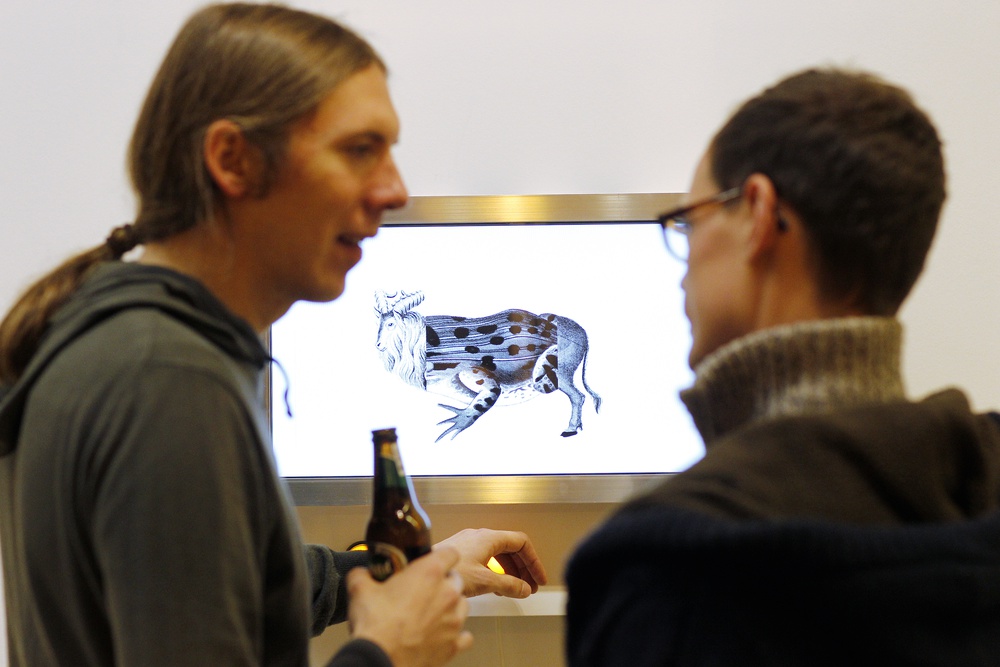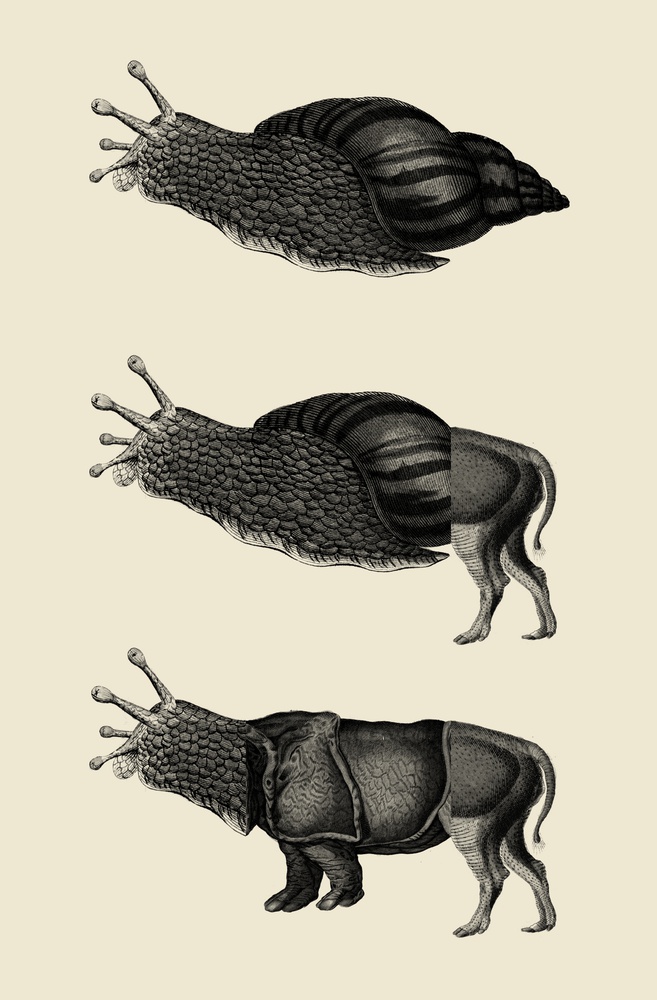Uli Westphal’s work investigates the way in which people experience, portray and transform the natural world. Similar to biology and its classification systems, but with a slightly different focus: he sets up a dialogue between culture and science. Although Westphal’s works of art often document natural phenomena, they mainly reveal how people perceive nature and how this has changed over time. The artist makes use of existing material and adds a new and alienating meaning.
For many years now, Westphal has worked on his Mutato Project, a collection of vegetables and fruit without a standardised supermarket look. In his work Chimaerama the theme of nature versus variety also plays a key role. A machine combines parts of 19th century animal drawings, from Lorenz Oken’s Allgemeine Naturgeschichten. The animals have been divided into head, body and tail. By combining these different parts, no less than a million new creatures can be created.

Uli Westphal (on the left) at the opening of Transformation

